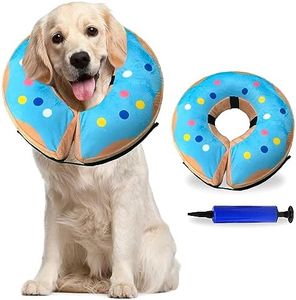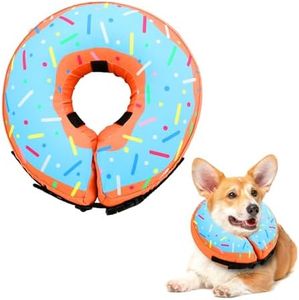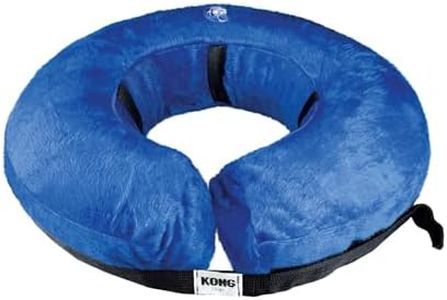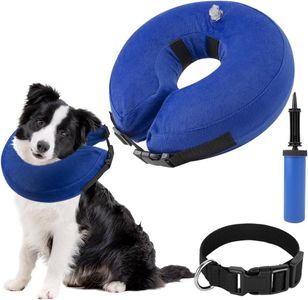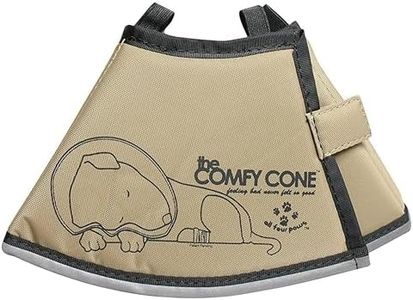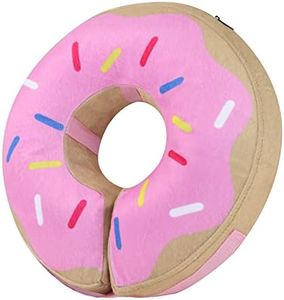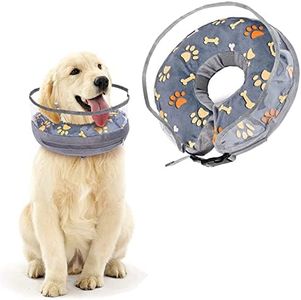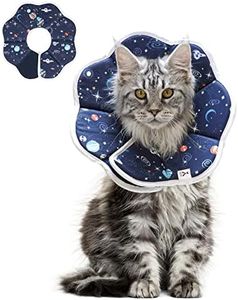We Use CookiesWe use cookies to enhance the security, performance,
functionality and for analytical and promotional activities. By continuing to browse this site you
are agreeing to our privacy policy
10 Best Dog Cone After Surgery
From leading brands and best sellers available on the web.Buying Guide for the Best Dog Cone After Surgery
Choosing the right dog cone after surgery is important for your pet's comfort and recovery. The main job of a cone (also called an Elizabethan collar) is to stop your dog from licking, scratching, or biting at wounds or stitches. The best cone for your dog should balance protection and comfort, making sure your dog can heal properly while still being able to eat, drink, and move around. Understanding the key features will help you select one that suits your dog's size, behavior, and recovery needs.Size and FitSize and fit refer to how well the cone matches your dog's neck and overall body dimensions. This is crucial because a cone that's too tight can be uncomfortable or even harmful, while one that's too loose may slip off or not provide enough protection. Products usually come with size guides based on breeds, neck circumference, or weight ranges. Measure your dog's neck using a flexible tape and compare it to the sizing chart provided with cones. Remember, a well-fitted cone should allow your dog to breathe easily and prevent reaching the wounded area. Picking the correct size will keep your dog safe and comfortable throughout recovery.
MaterialThe material of the dog cone impacts both comfort and durability. Common materials include stiff plastic, soft fabric, or inflatable designs. Stiff plastic cones are very effective at preventing access to wounds, but can be heavy or uncomfortable for some pets. Fabric and inflatable cones are lighter and more comfortable, though they might not be as durable or protective for determined pets. Think about your dog's behavior: if your dog is energetic or prone to chewing, a sturdy plastic cone might be necessary. If your dog is calm or easily stressed, a softer or inflatable cone may be preferable.
Ease of CleaningEase of cleaning refers to how simple it is to keep the cone hygienic while your dog is wearing it. Surgical cones can pick up dirt, saliva, or even food, which means they need to be cleaned regularly. Hard plastic cones can generally be wiped down or washed easily. Fabric or inflatable cones may be machine washable or require more careful cleaning. If your dog will be wearing the cone for an extended time, or if you expect them to get it dirty often, choose a cone that's easy to clean for both you and your dog's health.
VisibilityVisibility is about how much your dog can see while wearing the cone. Traditional cones can limit their side or peripheral vision, which can be stressful or make navigation difficult, especially in smaller spaces. Some cones are more transparent or have open-sided designs to improve visibility. If your dog is anxious, bumping into things, or generally uneasy about having their vision restricted, cones with better visibility may help them adapt more quickly after surgery.
Fastening MechanismFastening mechanism describes how the cone stays securely on your dog's neck. Common mechanisms include Velcro, snap buttons, or adjustable straps. A good fastening system ensures the cone won't slip off, but is also easy for you to put on and take off when needed. If your dog is squirmy, contests having things placed around their neck, or will wear the cone for a long time, opt for a secure and straightforward mechanism. Make sure it's not too tight—there should be just enough space to fit two fingers between the cone and your dog's neck.
Length and CoverageLength and coverage refer to how much of your dog's head and neck are covered by the cone. A longer cone can prevent access to areas further down the body, while a shorter cone might be less intrusive but offer less protection. If your dog's surgery site is close to the head or neck, a shorter cone could suffice. For wounds on the body or legs, you may need a longer cone. Always consider your dog's flexibility and whether they can still reach the healing area before making a final choice.
